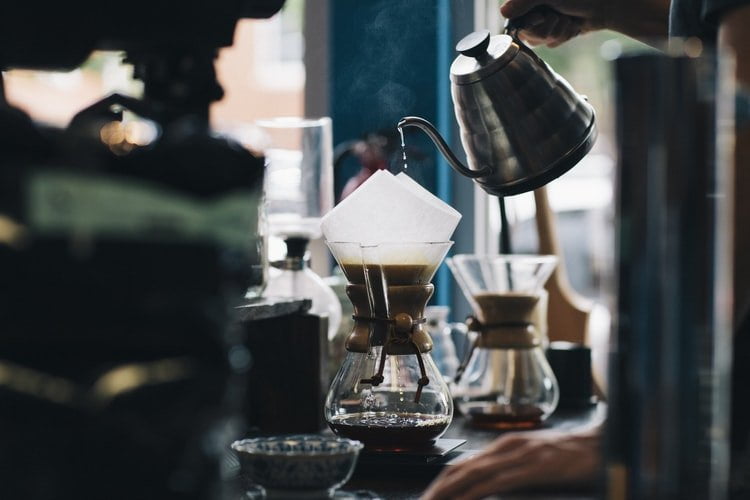
Research shows that coffee has incredible benefits for the body, mind, and soul. But it has to be brewed correctly, which means no half-caf, double-hot, no-foam, or other hyphenated adjectives.
Choosing the right roast, grinding properly, brewing style, water temperature, and many more things you’re probably not doing, or not doing correctly. Not to worry, we asked experts for their secrets to brewing the healthiest cup possible.
Healthy Coffee Beans
Coffee can do almost anything, according to science. Drinking it has been linked to a lower risk of liver cancer, colon cancer in women, type 2 diabetes, and even strokes in older women, according to research published in BMJ Open in May 2017. A meta-analysis published in June 2019 in the Journal of Human Nutrition and Dietetics found that drinking one cup of regular or decaf coffee daily reduces your risk of death by 3%, while drinking three cups daily reduces your risk by 13%.
This is largely due to polyphenols, plant-based compounds found in coffee beans. Phytochemicals called polyphenols have been shown to benefit brain and digestive health, as well as reduce the risk of heart disease and diabetes.
The Coffee Lover’s Diet author and former chief medical correspondent for NBC News, Bob Arnot, MD, says getting enough polyphenols is key to getting the most health benefits from your coffee. Some beans do this better than others. According to a review in the journal Antioxidants, high-altitude beans grown in Ethiopia and Latin America have the most polyphenols. Dr. Arnot suggests beans from Huila, Peru, Bolivia, Costa Rica, or Ethiopia. Arnot found 19,000 mg of polyphenols per cup of coffee from East Africa, but only 2,500 mg from major national chains. The goal is to consume 650 mg of polyphenols daily, but more is better.
The roast matters. Roasting beans enhances flavor but destroys antioxidants and polyphenols. Coffee Belly founder Ali Redmond says light roasts are higher in antioxidants than dark roasts because they are denser and therefore have more caffeine per scoop. In addition, light roasts have higher concentrations of chlorogenic acid, a compound found in coffee that has been shown to help protect the body against inflammation and cell damage.
The Healthiest Coffee Brew
After selecting the best beans, grind them. Coffee connoisseurs say grinding just before brewing maximizes flavor because air contact causes oxidation, which degrades flavor over time. But pre-ground coffee is just as healthy.
The main advantage of grinding your own beans is control over the fineness. The amount of health-promoting compounds in your cup varies. If you want to get the most polyphenols from your beans, grind them finer. The healthiest option is espresso, which requires a finely ground bean.
For a milder flavor, a pour over method can be used with a finer grind. A low-cost device (Arnot recommends the Kalita Wave Pour Over, $29) and a filter are used to make pour-over coffee, which has cardiovascular benefits, according to a study published in the European Journal of Preventive Cardiology. Over a 20-year period, researchers found that people who drank filtered coffee had lower rates of death from cardiovascular disease than people who didn’t drink it. This could be because unfiltered coffee contains up to 30 times more cholesterol-raising compounds than filtered coffee.
The final element in making the healthiest coffee is water temperature. A temperature of 195-205°F is ideal for optimal extraction, according to Chris Clark, founder of Brew Coffee At Home, a website that helps consumers make better coffee at home. If it’s too cold, the coffee will be underextracted (losing vital nutrients), and too hot, the flavor will be burned. No thermometer? Wait 30 seconds after the water boils before pouring it in.
Of course, if all of this sounds too laborious for you, you can always make instant coffee. Compared to espresso, filter coffee, Turkish or Greek coffee brews, instant coffee had the highest antioxidant concentration, according to a July 2017 Journal of Food Science and Technology.
How to Serve Coffee Healthily
After all that work to make the perfect cup, you don’t want to ruin it by adding cream and sugar. Drinking coffee black is the healthiest option, and a flavorful, high-quality bean should suffice. “People started putting milk in coffee during WWII because the coffee was bad,” Arnot says. “Adding sugar, milk, or fat to a beverage isn’t as healthy as leaving it out.”
Making Coffee healthier
So, there you go. A high-altitude bean, lighter roast, fine grind, filter, and hot but not boiling water make the healthiest cup of coffee. According to Arnot, most health benefits come from drinking four to five 8-ounce cups of coffee daily. However, by following these tips to prepare your brew in the healthiest way, you can get more polyphenols into a single cup and get the same benefits by drinking less. If you can’t handle caffeine, decaffeinated coffee has many of the same benefits (though caffeine itself has its own benefits, including improving mental function and helping with memory).

